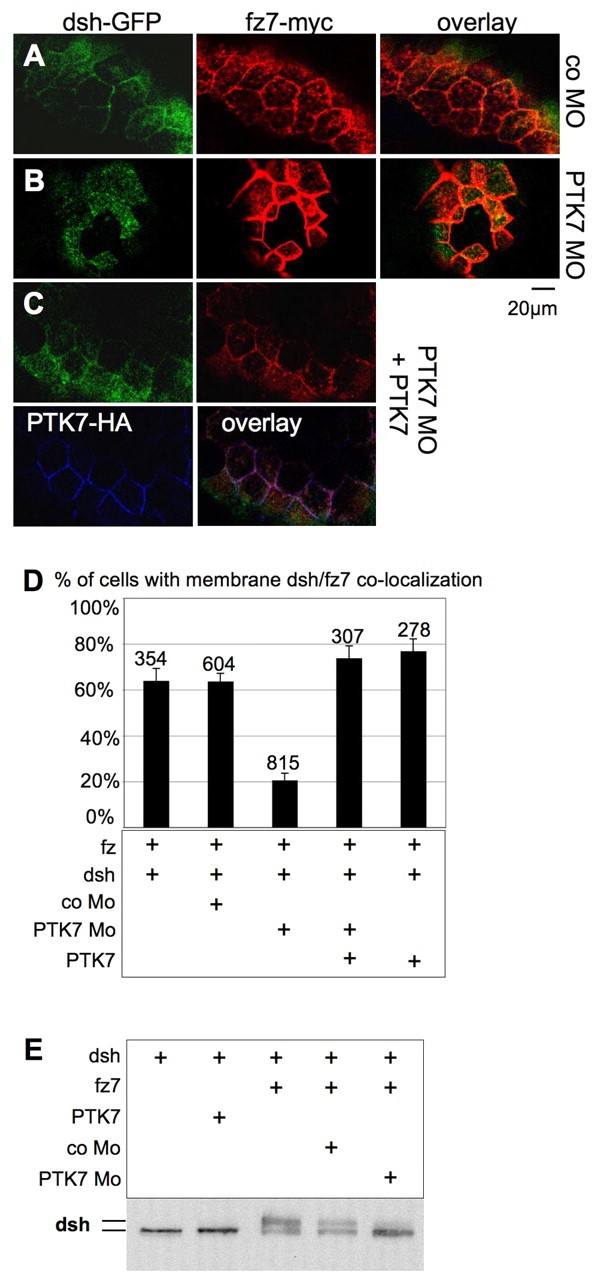XB-IMG-49470
Xenbase Image ID: 49470

|
Fig. 3. PTK7 is required for fz7-mediated dsh recruitment and phosphorylation. (A-D) PTK7 is required for fz7-mediated dsh recruitment to the plasma membrane. GFP-tagged dsh is shown in green, myc-tagged fz7 in red, HA-tagged PTK7 in blue. (A) GFP-tagged dsh is localized to the plasma membrane in animal caps injected with 100 pg dsh-GFP RNA, 100 pg fz7-myc RNA and 20 ng control MO. (B) GFP-tagged dsh is not recruited to the plasma membrane in animal caps injected with 100 pg dsh-GFP and 100 pg fz7-myc RNA and 20 ng PTK7 MO. (C) Co-injection of 100 pg wild-type PTK7 RNA lacking the MO binding site rescues dsh-localization of animal caps injected with 100 pg dsh-GFP RNA, 100 pg fz7-myc RNA and 20 ng PTK7 MO. (D) Graph summarizing the percentage of cells with simultaneously membrane-localized dsh and fz7. The total number of cells is indicated on each column. (E) PTK7 is required for fz7-dependent hyperphosphorylation of dsh. Embryos were injected with 100 pg dsh-myc RNA, 100 pg fz7 RNA, 500 pg PTK7-myc RNA, 20 ng control MO or 20 ng PTK7 MO in the combinations indicated. Animal caps were cut at stage 9 and their lysates were analyzed by western blotting using anti-myc antibodies. Hyperphosphorylated dsh is detected as a second high molecular weight band. One representative experiment of three independent experiments is shown. Image published in: Shnitsar I and Borchers A (2008) Copyright © 2008. Image reproduced with permission of the publisher and the copyright holder. This is an Open Access article distributed under the terms of the Creative Commons Attribution License. Larger Image Printer Friendly View |
